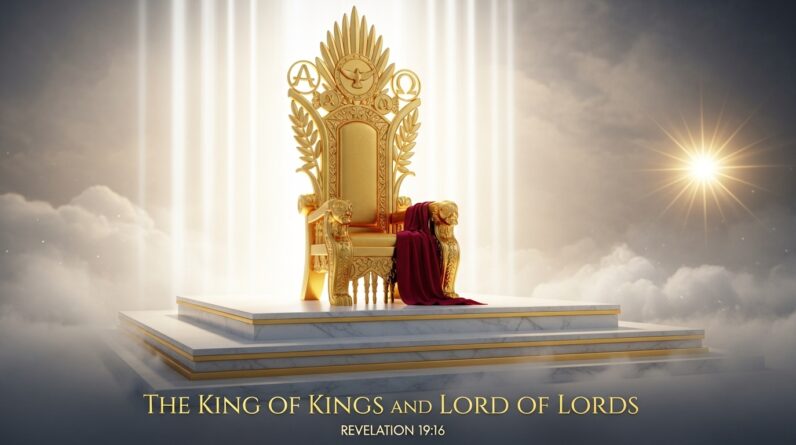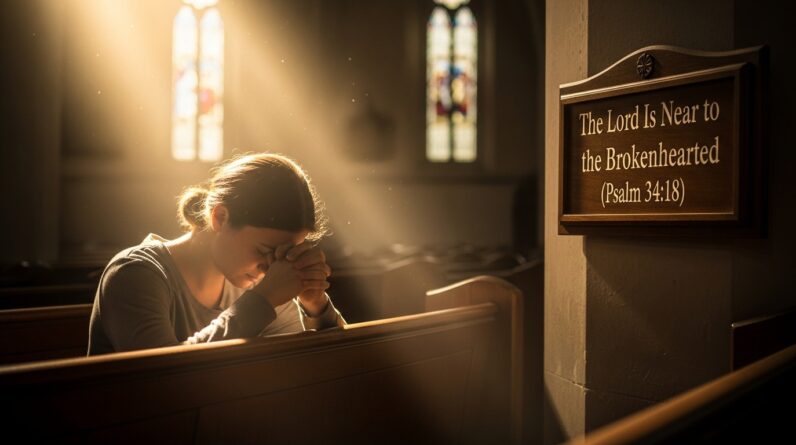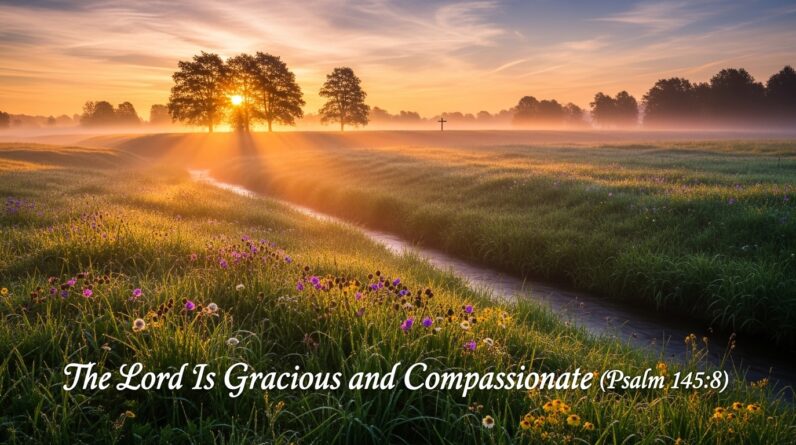The God Who Turns Mourning Into Dancing (Psalm 30:11)
You’ve probably heard the phrase “God turns mourning into dancing” quoted in sermons, songs, or devotionals. It’s one of those powerful, hope-filled lines that grabs you because it promises a reversal — that sorrow is not the end of the story. In Psalm 30:11, the psalmist celebrates a radical change in circumstance and mood, and you can lean into that image when you feel worn down by grief, loss, or seasons of waiting. Read it for yourself: Psalm 30:11.
In this article, you’ll explore what that promise means, why it’s trustworthy, and how it practically touches your life. You’ll see biblical examples of restoration, theological reasons for why God allows sorrow, and practical steps you can take when you’re walking through a hard season. Throughout, the focus remains on the hopeful claim that God turns mourning into dancing — and what that looks like for you today.
Understanding Psalm 30:11 — What the Verse Actually Says
When you read Psalm 30:11, the imagery is immediate: wailing becomes dancing, sackcloth is swapped for joy. That turnaround wasn’t accidental; it’s the psalmist thanking God for lifting him from a place of disgrace, illness, or danger to a new season of celebration. The verse isn’t just a poetic flourish — it’s testimony. It captures a before-and-after that you can identify with because life often has seasons that feel like darkness followed by dawn.
The Hebrew behind the line conveys restoration and reversal. The psalmist isn’t promising that life will never contain sorrow again. Rather, he’s celebrating God’s power to reclaim what felt lost — dignity, strength, hope. When you hold onto the phrase “God turns mourning into dancing,” you’re not denying pain. You’re affirming the possibility of divine intervention that converts sorrow into tangible joy.
Historical and Literary Context of Psalm 30
If you want to understand the force of the promise, it helps to see Psalm 30 within its context. This psalm is a song of thanksgiving — likely composed by David or attributed to a royal figure — and it celebrates deliverance from a crisis. Some scholars suggest it was written after an illness, others after a narrow escape from enemies, and still others link it to recovery following a disaster. Whatever the precise occasion, the psalm functions as a communal or personal testimony that God rescued the singer from a low point and restored him to a place of honor.
Knowing this background helps you apply the verse. The psalmist’s experience anchors the phrase “God turns mourning into dancing” in real-life restoration rather than empty optimism. It tells you that God has acted in history and that He can act again in your story.
The Promise in Scripture: More Than One Verse Speaks This Way
Psalm 30 is not the only place where Scripture paints mourning-to-joy reversals. You’ll find this theme throughout both Testaments, which builds your confidence that God’s habit is to bring life out of brokenness.
- Isaiah talks about God replacing grief with praise and giving a “garland instead of ashes” in Isaiah 61:3, a passage Jesus later cites as part of His mission.
- Joel promises restoration for what the locusts have eaten in Joel 2:25-26, an example of God making restitution after loss.
- Paul comforts believers by writing that God works for their good even in suffering in Romans 8:28.
- The final hope of Scripture points to a time when death and mourning will be no more in Revelation 21:4.
When you read these passages together, you realize the motif is consistent: God moves history and individual lives toward wholeness. That repetition helps you trust the promise that God turns mourning into dancing.
Why This Promise Is Relevant to Your Life
You don’t live in a vacuum. You’ll face disappointments, failed plans, broken relationships, and unexpected losses. But the biblical witness shows you don’t have to stay in those hard places. When you claim that God turns mourning into dancing, you’re recognizing that God is present in your pain and that He has the capacity to change your narrative.
That doesn’t mean you’ll always see the turnaround right away, or that every sorrow will be fully removed in this life. But you can expect that God works redemption into the story. He restores dignity where shame was inflicted, provides comfort where grief feels overwhelming, and brings rejoicing where heartbreak once ruled.
Biblical Examples of Restoration You Can Identify With
Stories in the Bible make the promise concrete. When you read them, you can see how God’s restorative work played out in ordinary, messy lives — much like yours.
- Naomi felt emptied after losing her husband and sons and asked to be called “Mara,” meaning bitter (Ruth 1:20). Yet through Ruth’s faithfulness and Boaz’s kindness, Naomi’s household was restored and her heart filled with joy again (Ruth 4:14).
- Job experienced devastating loss and unimaginable grief, but after he persisted in faith, “the Lord restored his fortunes” and gave him a new beginning (Job 42:10).
- David’s life includes highs and lows, including times of illness and despair, yet his songs frequently testify to God’s deliverance and restored praise (see Psalm 30:11 and related psalms).
- Paul’s conversion in Acts flips his persecutor identity to apostle and advocate for Christ, a radical life reversal you can read about in Acts 9:18-22.
These stories reassure you that God’s restorations are varied — sometimes materially, relationally, spiritually — and often involve both inner transformation and external change.
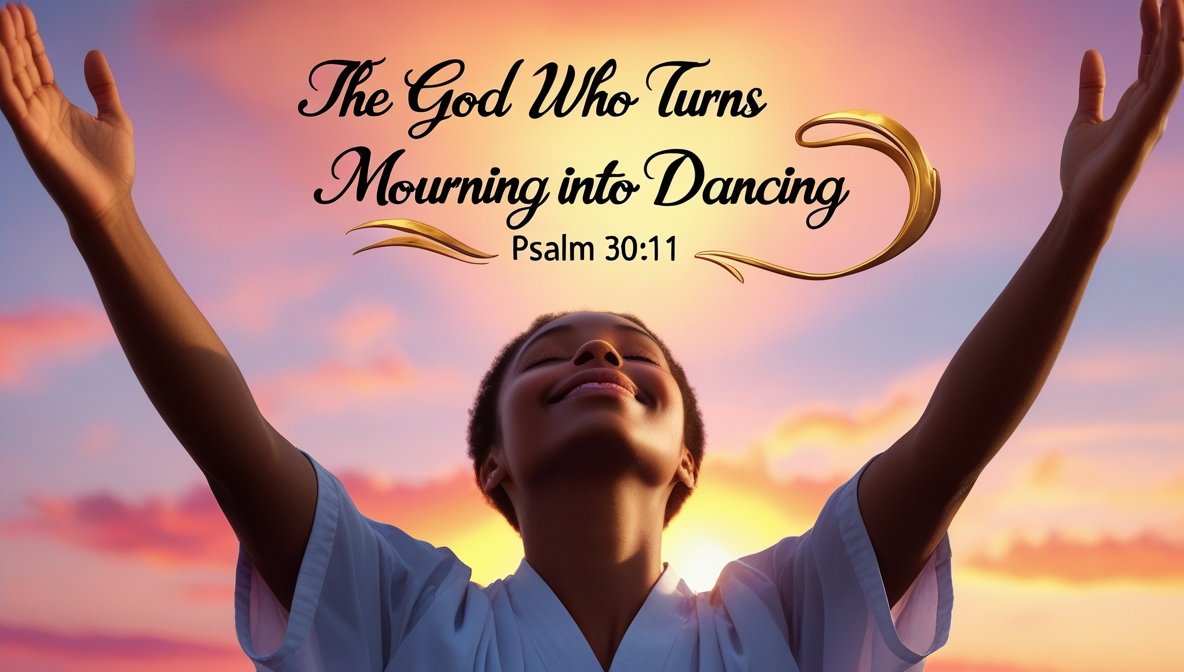
How God Brings Joy After Sorrow
You might be wondering: how does God actually do the turning? While God’s ways are not formulas, Scripture highlights several consistent means by which He brings joy after sorrow.
- Comfort through Presence: God’s nearness is a tangible comfort in grief. Scripture promises God’s closeness to the brokenhearted (Psalm 34:18). When you feel deserted, the reality that God is with you becomes a source of strength.
- Community and Compassion: God often brings healing through people — friends who show up, churches that hold you, neighbors who carry a meal. You’re meant to enter grief with others; Romans instructs you to mourn with those who mourn (Romans 12:15). Community can be a conduit of God’s joy.
- Worship and Liturgy: Lament turning into song is a biblical pattern. When you lift honest prayers and songs to God, you create space for Him to work in your feelings. The psalms themselves shift from lament to praise repeatedly, showing you can bring your pain into God’s presence and let Him transform it.
- Time and Sanctification: Sometimes God’s work unfolds slowly. Sorrow may refine your character, shaping endurance, empathy, and dependence on Christ. James tells you to consider trials as a way God produces perseverance (James 1:2-4). This doesn’t make the pain pleasant, but it promises purposeful growth.
- Eschatological Hope: Finally, Scripture points to a future where sorrow is eradicated forever. Revelation paints a picture of God wiping every tear from eyes (Revelation 21:4). That ultimate restoration informs how you endure the present.
All of these underscore how God turns mourning into dancing: through His presence, His people, spiritual practices, personal transformation, and ultimate redemption.
Practical Steps When You’re in Mourning
You need practical steps because passive wishful thinking won’t carry you through grief. Scripture and wisdom tradition give you habits that help you move from mourning toward the dancing God wants to bring.
- Lament honestly. The psalms teach you to take your pain to God in raw language. Saying how you really feel is the first step toward healing.
- Invite the community. A friend, pastor, or support group can sit with you in the darkness. Grief isn’t meant to be solitary.
- Keep regular spiritual rhythms. Prayer, Scripture reading, and worship don’t erase pain instantly, but they position you to receive God’s comfort and perspective (see Philippians 4:6-7).
- Practice gratitude when possible. Small acts of thanksgiving recalibrate your focus without denying the sorrow.
- Seek professional help when needed. Faith and therapy often work together in the restoration process.
- Wait with hope. Waiting doesn’t mean passivity; it means actively trusting. Scripture encourages you to wait on the Lord (for example, the many psalms that express patient hope).
When you apply these steps in the context of God’s promises, you’re cooperating with the ways God brings restoration.
Worship as a Tool for Transformation
It might seem odd to worship when you’re grieving, but worship is a spiritual practice that changes you from the inside out. The Bible gives striking examples of worship that express and create joy.
David famously “danced before the Lord” when the ark of the covenant was brought into Jerusalem (2 Samuel 6:14). That dance was an outward expression of an inward restoration. Paul repeatedly urges believers to rejoice and to adopt an attitude of praise even amid trials (Philippians 4:4). Worship reorients your heart: it reminds you that God is sovereign, compassionate, and active.
Worship doesn’t ignore hard questions or bypass grief. It provides a framework in which your sorrow can be brought honestly into God’s presence and gradually replaced by hope as you see God’s faithfulness.
The Tension: Why God Doesn’t Always Remove Sorrow Instantly
You may ask: if God turns mourning into dancing, why is there still pain in the world? That’s a fair question, and Scripture gives reasons that help you live in the tension.
- Free will and a fallen world mean suffering is a part of current reality. Not every pain is a divine punishment or a sign of God’s absence.
- Suffering can produce spiritual maturity. Romans says the present sufferings produce for you an eternal weight of glory (Romans 8:18). That suggests present trials have meaning even if they’re painful.
- God’s timing is not your timing. Sometimes the restoration you long for is delayed, not denied. Joel’s promise of restoration in Joel 2:25-26 came after national devastation — it was real, but it came after hardship.
- Learning dependence on God can be part of the lesson. In the process you grow in trust, empathy, and the ability to comfort others later.
This explains why “God turns mourning into dancing” is a promise embedded within a larger narrative that includes struggle and growth. You can hold hope without denying the real cost of pain.
The Eschatological Hope: Final Restoration
The ultimate reality of Scripture affirms your deepest hope: God will one day remove sorrow completely. This future certainty informs present endurance.
- Revelation provides the final vision: “He will wipe every tear from their eyes. There will be no more death or mourning or crying or pain” (Revelation 21:4). As you read this, know that your present grief is not the end.
- Isaiah adds to this picture, promising that God will swallow up death and wipe away tears (Isaiah 25:8). That last chapter gives you a horizon of hope that reshapes how you live now.
When you believe that final reversal is coming, you can embody hope in the small reversals God provides today — those moments when the song returns, when laughter resurfaces, and when relationships are mended.
Living Between Lament and Praise
One of the healthy spiritual postures is living between lament and praise. The psalms show you how to speak truthfully about your pain and then, in the same breath, choose to trust God. Psalm 30 itself moves from distress to thanksgiving, modeling how you can practice spiritual honesty and expect transformation.
Psalm 126 offers another vivid image: those who sow in tears will reap with songs of joy (Psalm 126:5-6). You don’t skip the sowing. You don’t bypass the tears. But you believe they’re not wasted. When you cultivate spiritual disciplines, you allow God to convert your mourning into dancing over time.
Addressing Doubts: What If Healing Doesn’t Come the Way You Expect?
You may be skeptical, especially if you’ve prayed and felt ignored. That’s understandable. The biblical witness does not promise instant relief in every case. Here are some biblical truths to hold onto when doubt creeps in:
- The psalmists themselves express doubt and confusion while still returning to trust. Lament and faith can coexist (see many psalms).
- God’s answer might differ from your expectation. Sometimes restoration looks different than you imagined, but that doesn’t mean God wasn’t at work.
- Community and sacrament are means God uses. Grief is often healed in the context of relationships and meaningful practices like remembrance and ritual.
- The final conclusion of the Bible is that God will make all things right; this shapes your patience and perspective (Revelation 21:4).
You don’t have to pretend everything is fine. Bring your questions and doubts into honest prayer and community, and keep looking for God’s small mercies that may be paving the way to larger restoration.
Real-World Ways People Have Experienced “God Turns Mourning Into Dancing”
Even if you don’t yet have your own testimony, you can learn from how others have experienced restoration.
- People who lost jobs and found new callings often describe a season of mourning followed by renewed purpose.
- Those who face relational betrayal sometimes experience reconciliation and deeper intimacy later.
- Many who survive illness or near-death experiences describe a renewed appreciation for life and a new kind of joy.
- Churches that support the grieving often watch members move from despair to testimony, faithfulness, and renewed service.
None of these examples erase the pain, but they show patterns where brokenness is integrated into a greater story of healing. When you hear these stories, they can ignite hope that God turns mourning into dancing in your life too.
A Pastoral Word: What to Say to Someone Who’s Mourning
If you’re walking alongside someone in sorrow, what you say matters. Avoid platitudes that deny pain. Instead, offer presence and concrete help. Scripture models both lament and consolation. You can read passages with them, sit in silence, bring a meal, or pray. Romans tells you to “mourn with those who mourn” (Romans 12:15) — not to fix, but to be there.
When you say “God turns mourning into dancing,” let it be a promise that comforts rather than a command that minimizes. That gentle balance helps the grieving person hold hope without feeling pressured to “move on” before they’re ready.
Prayer: A Simple Way to Invite God Into Your Grief
Prayer is not a magic formula; it’s a conversation. When you ask God to turn mourning into dancing, you’re inviting Him to do what He has done before. Here’s a simple prayer you can use or adapt:
“Lord, I bring my grief to You. I don’t understand all of this, but I trust that You see me and You care. Please be near. Bring comfort for what I’ve lost, and when the time is right, restore joy in ways only You can. Help me to wait with hope and to lean on the community You’ve given me. In Jesus’ name, Amen.”
You can find comfort in God’s presence because He is the God who binds up the broken and brings beauty from ashes. Scripture repeatedly highlights this: God heals the brokenhearted and saves the crushed in spirit (Psalm 147:3).
How to Recognize the First Signs of Turning
Sometimes the shift from mourning to dancing happens gradually. You’ll notice small signs: a night of restful sleep, a laugh that bubbles up unexpectedly, a renewed appetite for life, or a door opening that leads to new work or relationships. These are not proof that the pain was frivolous but indications that God is nudging you toward restoration.
Cultivating awareness helps you see these signs. Keep a journal. Note moments of gratitude. Celebrate small victories. The psalmist’s turn to praise came when restoration became evident; your praise may begin small but grow as God works.
The Role of Memory and Testimony
Telling your story matters. The psalmist’s song became public testimony that encouraged others. When you share how God turned mourning into dancing in your life, you give hope to someone else still in the middle of sorrow. Memory is also a tool of worship: remembering God’s past faithfulness fuels your present trust. Don’t underestimate the power of testimony in both your healing and the healing of others.
Final Encouragement: Hope That Hangs On God, Not Circumstance
As you live out this truth, anchor your hope in God rather than the circumstances that change. The promise that God turns mourning into dancing is ultimately about a relationship with a faithful God. Circumstances may shift back and forth, but God’s faithfulness endures. Keep returning to the biblical witness: God’s nearness to the brokenhearted (Psalm 34:18), His ultimate promise to eliminate sorrow (Revelation 21:4), and His track record of restoration in the lives of His people, both in Scripture and in living testimony.
When you believe that God turns mourning into dancing, you’re not choosing superficial positivity. You’re choosing faith — a faith that petitions God, sits with sorrow, works for healing, and celebrates recovery when it comes.
Closing Reflection and a Short Prayer
You’ve explored Scripture, biblical examples, practical steps, and pastoral wisdom — all converging on one crucial reality: God turns mourning into dancing. This doesn’t erase the legitimacy of your grief, but it invites you to live expectantly and faithfully in the middle of it. Allow yourself to lament honestly, lean on community, maintain spiritual disciplines, and keep an eye on the horizon of God’s ultimate restoration.
A closing prayer you can say now: “Father, thank You for being with me in this season. Help me to trust that You can and do turn mourning into dancing. Give me patience to wait, courage to lament, and eyes to see the small mercies You give each day. Amen.”
Explore More
For further reading and encouragement, check out these posts:
👉 7 Bible Verses About Faith in Hard Times
👉 Job’s Faith: What We Can Learn From His Trials
👉 How To Trust God When Everything Falls Apart
👉 Why God Allows Suffering – A Biblical Perspective
👉 Faith Over Fear: How To Stand Strong In Uncertain Seasons
👉 How To Encourage Someone Struggling With Their Faith
👉 5 Prayers for Strength When You’re Feeling Weak
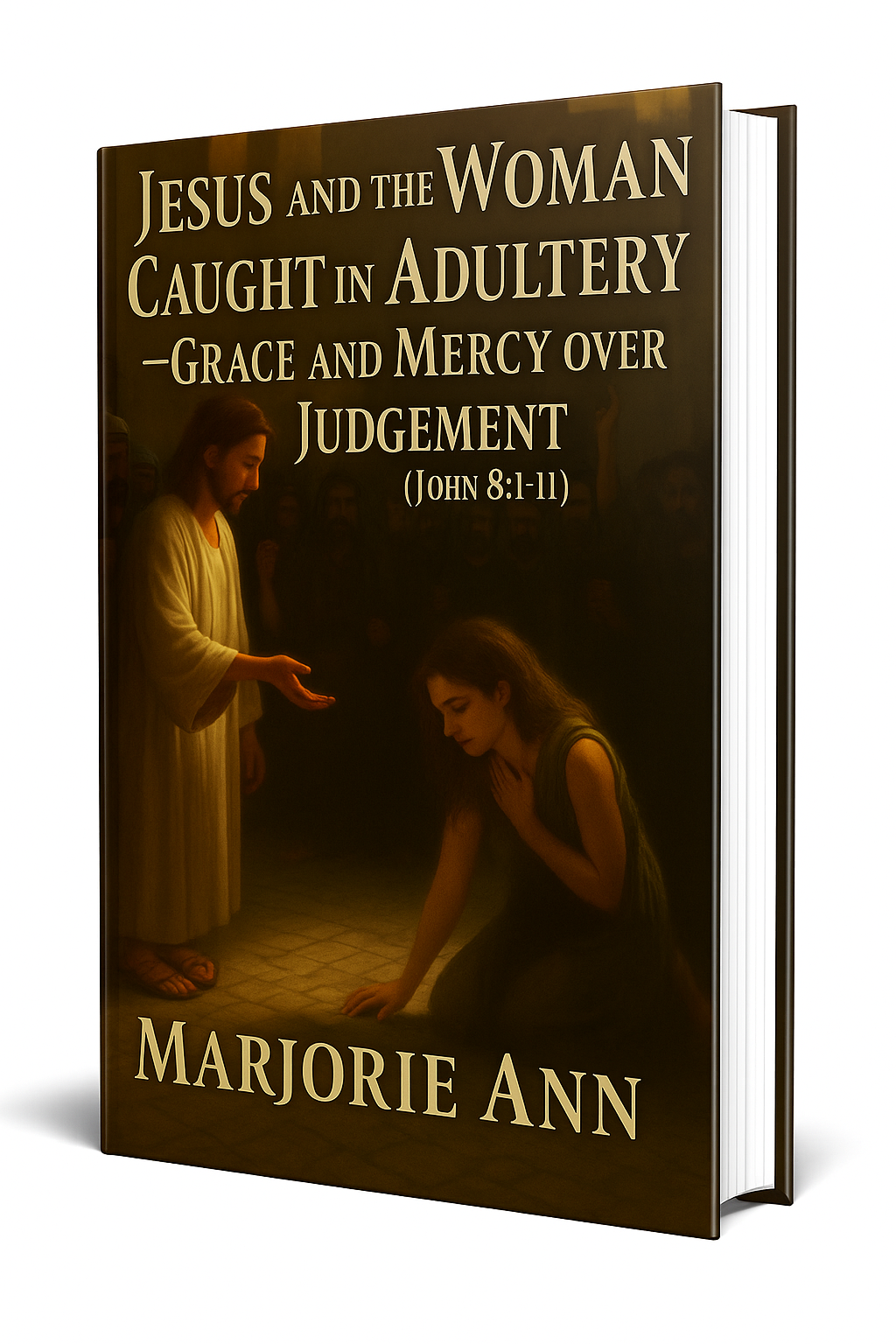
📘 Jesus and the Woman Caught in Adultery – Grace and Mercy Over Judgement
A powerful retelling of John 8:1-11. This book brings to life the depth of forgiveness, mercy, and God’s unwavering love.
👉 Check it now on Amazon 🛒💥
🔥 “Every great message deserves a home online.” 🌍💬🏡
Don’t let your calling stay hidden. Start a Christian blog or website using Hostinger — with 99.9% uptime, a free domain, and SSL, your voice can shine for God’s glory anytime, anywhere.
💥 Begin today. 🛒 Try it RISK-FREE! ✅
✝️ “Your body is God’s temple — care for it with purpose.” 💪💖🏛️
Renew your energy and restore balance naturally. Mitolyn helps support a healthy metabolism, giving you the vitality to live out God’s calling with strength and confidence.
🔥 Unlock Your Metabolic Power! ⚡Burn More Calories & Feel Great With Mitolyn. 💪
👉 Start Today. 🚀 Check Price Now. 🛒💰
💰 As a ClickBank & Amazon Affiliate, I earn from qualifying purchases.
📖 Acknowledgment: All Bible verses referenced in this article were accessed via Bible Gateway (or Bible Hub).
🚀 Want to explore more? 👉 Dive into our new post on Why Jesus? and experience the 🔥 life-changing truth of the Gospel!




